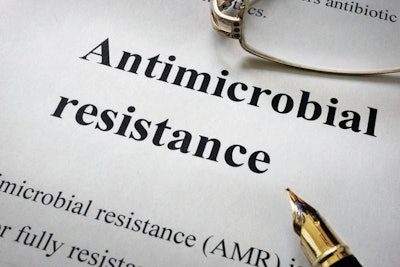
Coccidiosis is a long-standing problem for the poultry industry, and while coccidiostats have been the go-to solution for decades, their use is increasingly questioned. If broiler producers are to continue to control coccidiosis, an awareness of the restrictions being imposed on their use and what alternative control measures may be available is essential.
Eradication of coccidiosis is not a practical option, given its ubiquitous nature, meaning that it can only be controlled. Key to successful control is good flock management as, without it, any controls will be suboptimal.
Broiler producers need to adapt to this changing regulatory environment, understand evolving consumer demands and, on occasion, help to shape consumer understanding if they are not to lose yet more coccidiosis control options.
Evaluating use
Coccidiostats need to be used continuously in prevention programs as even sub-clinical disease has an impact on broiler health and productivity. By the time clinical signs of disease become visible, significant damage to the bird will already have been done.
However, drug use, particularly for prophylaxis, in animals destined for human consumption is under increasing pressure from consumers and governments alike.
Where prophylactic use of ionophore anticoccidials is limited, however, the use of therapeutic antimicrobials to treat, for example, necrotic enteritis and secondary infections, is likely to increase.
This presents a particular difficulty as, in contrast to coccidiostats, antimicrobials used to control secondary infections are classified as medically important. Increasing their use on farm may have greater implications for human health than the continued use of anticoccidials.
Concerns over antibiotic resistance
Ionophores have some activity against certain bacteria, leading, in some countries, to their classification as antibiotics and to concerns over their use increasing bacterial resistance.
However, the threat of ionophores causing resistance is limited for several reasons.
Ionophores are only used in veterinary, not human, medicine, and are not active against most Gram-negative bacteria, which include most of the foodborne pathogens found on poultry.
In studies with Gram-positive bacteria, while some decreased susceptibility has been observed, true resistance does not seem to develop.
Ionophores are not included in the World Health Organization list of medically important antimicrobials.
However, despite scientific evidence suggesting that ionophores have only limited potential to cause resistance, producers need to be aware that public concern over their use is likely to increase.
Ionophores in AB-free birds?
There is a growing trend towards antibiotic-free poultry production and where ionophores are classified as antibiotics they cannot be used in this type of production.
In these regions, an increased use of synthetic compounds and vaccines, separately or in combination, has emerged. Neither synthetic compounds nor vaccines protect against secondary infections, and this has resulted in the use of probiotics or alternative products to aid broilers’ immune function.
Concern over coccidiostat resistance
The long-term use of anticoccidial products has led to reduced parasitic sensitivity.
Reduced sensitivity to synthetic compounds, however, occurs more quickly than it does to ionophores, meaning that synthetics must be used more judiciously, while ionophores can be used more broadly.
While coccidia may have become less sensitive to coccidiostats, this has not greatly impacted outbreak management. This is due, in part, to coccidiostats allowing trickle infections to occur, leading to broilers developing immunity.
Combination approaches
Combination products, and shuttle/rotational programs are a standby in the broiler industry.
Combination products containing both ionophores and synthetic compounds reduce the speed at which sensitivity develops meaning that they can be used for longer periods.
Sensitivity development can also be controlled by using rotational programs, whether different synthetic coccidiostats and ionophores are used in each production cycle or at different feeding stages within a cycle.
Alternating between the various ionophores and synthetic compounds helps to maintain the effectiveness of all products.
The approach is likely to continue and could expand to include alternatives, such as vaccines, to help restore drug sensitivity in field populations. Another option may be to combine coccidiostats with feed additives, probiotics, pronutrients and other natural products to promote immune activity, while coccidiostats could also be used in combination with vaccines.

The threat of ionophores causing bacterial resistance is limited, however, public concern over their use is likely to increase. (designer491 | Bigstock.com)
The need for coccidiostats
Conservative estimates of the global costs of coccidiosis are in excess of US$3 billion every year, while other estimates are much higher. In 2020, Blake et al, writing in Veterinary Research, gave updated estimates that global 2016 costs were over US$14 billion, with 17.5% from preventives and treatments, and 80.5% from subclinical effects, such as reduced weight gain and feed conversion.
Clearly, coccidiostats have a key role to play in the sustainability and affordability of poultry, however, for their use to continue, poultry producers must demonstrate a conscientious approach to their use and educate consumers on their benefits.
















